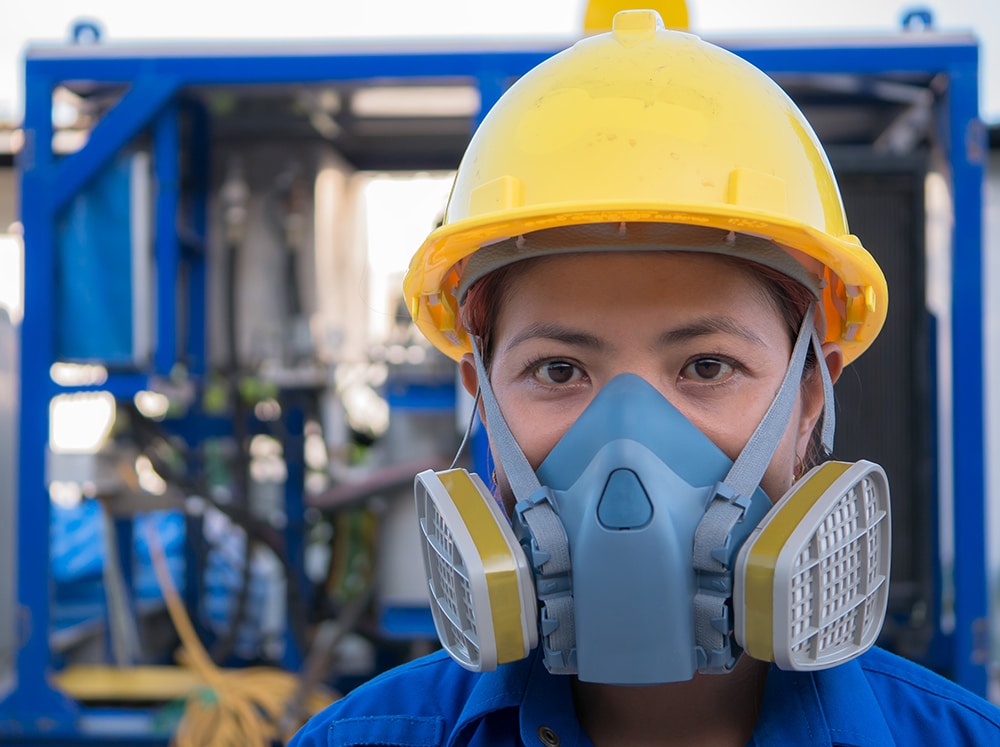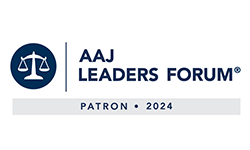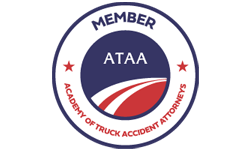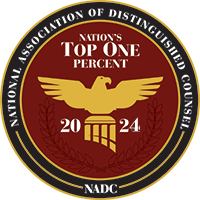
There’s no doubt that construction is a dangerous industry. Falls, electrocutions, crushing incidents, and explosions are just a few of the hazards that workers are confronted with every day on the job. If you work on a construction jobsite, developing mesothelioma is another threat your employment may force you to face.
Asbestos Exposure in the Construction Industry
The Occupational Safety and Health Administration (OSHA) acknowledges that asbestos exposure is a serious problem in the construction industry. OSHA categorizes asbestos under “Toxic and Hazardous Substances.” As the only substance known to cause mesothelioma, asbestos is recognized as a dangerous carcinogen.
Construction workers frequently perform tasks that put them at risk of asbestos inhalation or contact. This may include:
- Demolishing or salvaging structures that contain asbestos
- Removing or encapsulating asbestos-containing materials
- Constructing, repairing, or maintaining structures that contain asbestos
- Installing asbestos products
- Performing emergency asbestos cleanups
- Transporting, disposing, and storing products that contain asbestos
Occupational asbestos exposure is the leading cause of mesothelioma. The risk of exposure is especially high in general industry, maritime, and construction. Because asbestos was once used widely in building materials, any worker dealing with structures like houses, offices, apartments, schools, and other buildings must take caution against exposure. Individuals who perform ship and submarine construction also face the hazards of asbestos inhalation.
Some of the most common asbestos-containing products and materials include:
- Insulation
- Ductwork
- Piping
- Roof shingles
- Roofing felt
- Furnaces
- Gaskets
- Knob & tube wiring
- Cement
- Textured paint
- Popcorn ceilings
- Fuse boxes
Guidelines for Asbestos Safety on Construction Sites
Per OSHA regulations, workers need to be informed of the presence of asbestos on a worksite and how to deal with it. All employees must receive proper training about the risks of asbestos and ways to prevent exposure. Any asbestos hazard needs to be abated by the contractor who created or controls the source of asbestos contamination.
Unfortunately, there is no “safe” amount of exposure to asbestos. Even limited exposure can lead to a mesothelioma diagnosis. There is still much research to be done on mesothelioma and its development following asbestos exposure. But we do know that no amount of asbestos—no matter how minimal—can be considered harmless to the human body.
For this reason, it’s essential for construction workers to be properly trained and protected from asbestos contact or inhalation on jobsites. The following safety rules can help protect workers from the dangers of this cancer-causing fiber.
Demarcate Exposure Areas
OSHA regulations require that all known areas containing asbestos materials be marked and contained. Being unaware of the presence of asbestos is not an excuse. Proper testing and evaluation needs to be done to identify all sources of asbestos. Once the materials have been identified, the area should be carefully contained by OSHA standards to prevent airborne travel.
The contractor or foreman also needs to erect warning signs to keep others from entering the area. Only workers who have been trained, approved, and equipped with the necessary safety gear should be allowed to enter the demarcated exposure area.
Limit Access to Exposure Areas
An area known to contain asbestos materials should never be open to the public. After containing the hazard zone, site managers need to take steps to ensure that no one can simply walk into an exposure site unaware. Other construction workers who haven’t been properly trained and equipped shouldn’t be allowed in the area.
Even members of the team working on the project in that particular area should only be allowed to enter when they are instructed to. No one should be present at an exposure site—under any conditions—if they are not protected by standardized safety equipment.
Use the Proper Safety Equipment
All construction workers need to be supplied with the right personal protective equipment (PPE) if there is a chance they will be handling asbestos products. Workers should be trained on the proper equipment to use—and how to use it effectively. Construction workers must be outfitted with the appropriate:
- Respirators
- Goggles
- Protective outerwear
- Gloves
- Footwear
A respirator is the most important piece of safety equipment to prevent asbestos inhalation. In addition to PPE, OSHA-compliant equipment needs to be used for safe handling of asbestos-containing products. This includes safety gear like local air ventilators and vacuum cleaners equipped with high-efficiency particulate air (HEPA) filters.
Avoid Dangerous Activities Near Exposure Sites
OSHA warns that some activities should never be done near asbestos-containing materials. These activities include:
- Eating
- Drinking
- Smoking
- Chewing tobacco
- Chewing gum
- Applying cosmetics
Participating in these activities can increase the chance of asbestos inhalation. Any activity that requires a worker to remove part or all of their PPE should never happen near asbestos. OSHA expressly states that activities of this nature are prohibited in and around asbestos sites.
Train and Inform Employees Properly
Construction site workers can’t protect themselves properly if they aren’t given the right tools. Employees need to be made aware of the dangers associated with asbestos exposure, the areas and materials that contain asbestos, and the most effective ways to avoid exposure.
When workers aren’t aware of the potential for asbestos exposure on their jobsite, they can’t take the necessary safety measures to protect themselves. Many mesothelioma victims never knew they are handling asbestos until years after the fact.
If this happened to you, and you were diagnosed with mesothelioma, you may be able to take legal action. Companies that withhold vital information from their employees should be held responsible for the irreversible damage caused.
Enforce Safety Regulations
Safety regulations are useless if they aren’t enforced. Asbestos exposure is extremely dangerous and often fatal. Site managers and contractors have a duty to make sure the construction site is safe for every worker present. This includes implementing (not just creating) rules that ensure each person does their part to protect the safety of all.
Get the Help of an Experienced Mesothelioma Lawyer
Construction workers who were diagnosed with mesothelioma after jobsite asbestos exposure need to know there is someone on their side. At Frost Law Firm, PC, we fight for the rights of those injured through their employment. Contact us today for a free case evaluation. We’ll walk with you through your legal options.



















